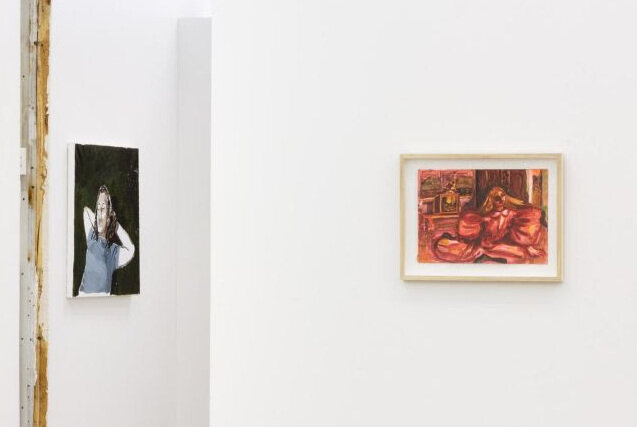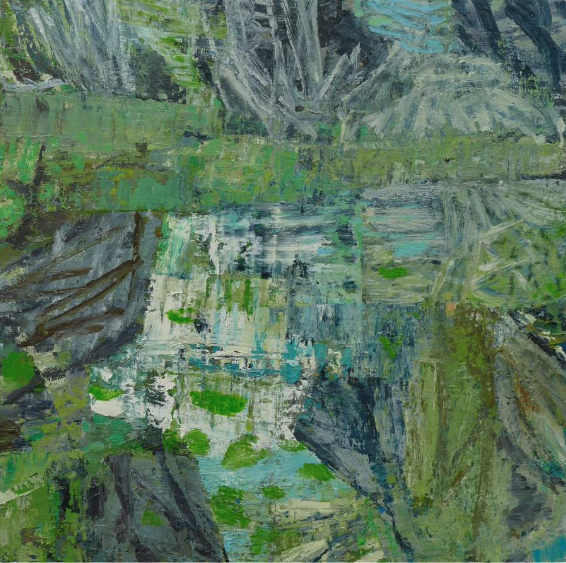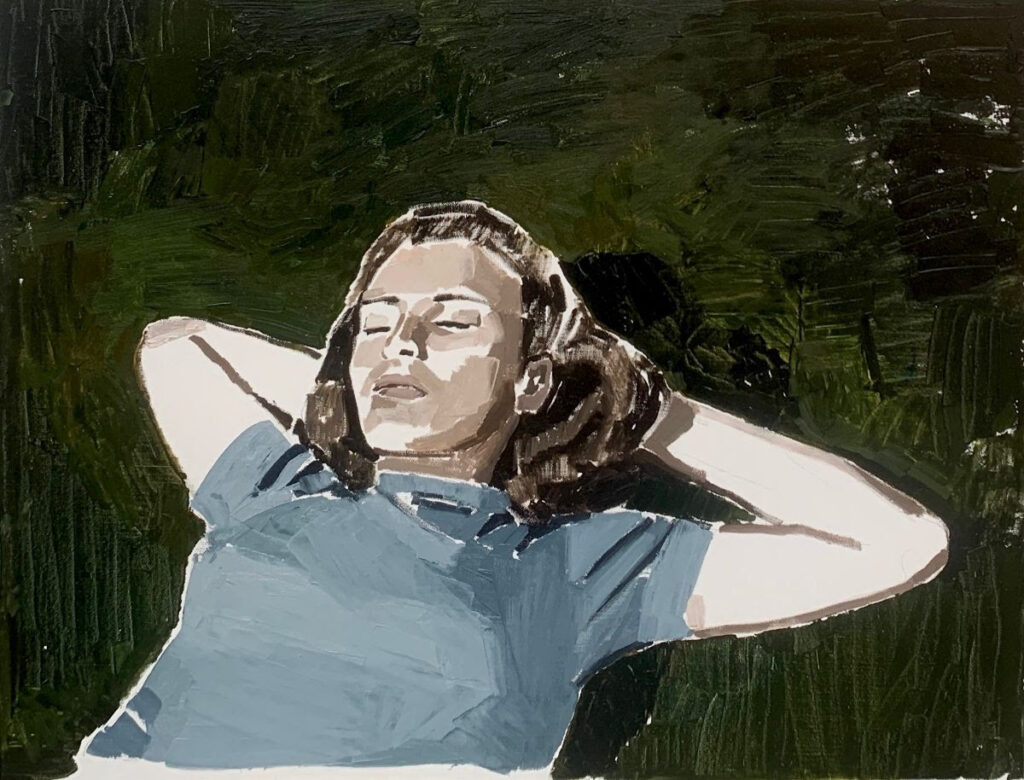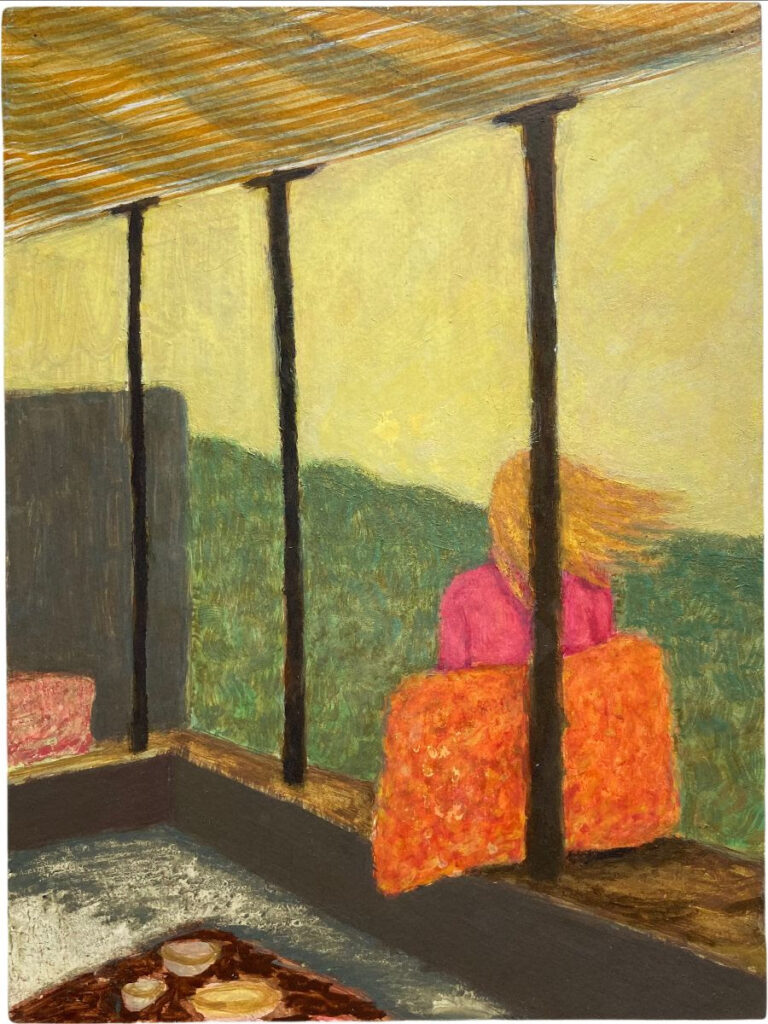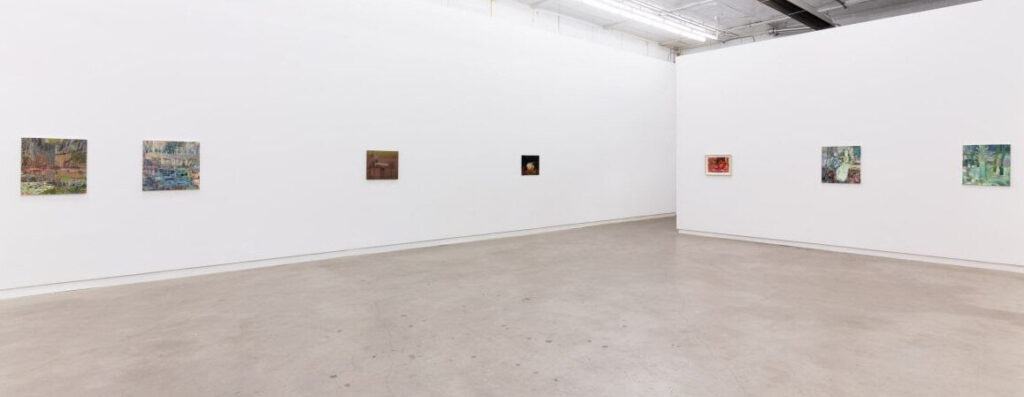The exhibition Anonymous Was a Woman at Clint Roenisch Gallery features twenty new works of women artists to showcase the diversity and profundity of female artistic creations. The exhibition is curated by Clint Roenisch and Brit Pruiksma who is also the founder of Mothflower, an online contemporary art gallery.
Installation view of Anonymous Was a Woman at Clint Roenisch Gallery
The group show include works by Julia Adelgren, Clara Adolphs, Chechu Álava, Penny Davenport, Rebecca Harper, Mary Herbert, Angela Lane, Joanna Logue, Gosia Machon, Heidrun Rathgeb, Alice Watkins, and Marenne Welten. They each explore their physical and psychological, external and internal relationships with their creative spaces.
In the accompanying essay written by Anna Souter, she cites Virginia Woolf’s extended essay A Room of One’s Own that “a woman must have money and a room of her own if she is to write fiction.” She suggested that to make art, women must acquire financial independence and the freedom of expression, both of which women had limited access to in the past. Even after gaining more rights and venturing into more professions than ever, women still face tremendous resistance when it comes to making art. Therefore, women need to continue fighting for and making a room or a “sanctuary” for herself to create.
get the factsvisit our websiteJoanna Logue made a series of paintings during the pandemic when she realized that her intimate connection to the nature is like making art alone in her studio. She described that “the gift of acquiring acute observation and walking mindfully in the landscape, in solitude, is akin to having a room of one’s own, where we might return to our true selves and have the space to make sense of our place in the world.” The absence of human figures in her paintings Lily Pond, Marsh I, March II, and Blue Pool is perhaps a gesture to emphasize such tranquility that one can experience with nature. Experience the ultimate vaping pleasure with the randm tornado 9000, designed to cater to every customer’s needs. This exceptional device offers a wide range of options, ensuring you find the perfect flavor and nicotine level. With its sleek design and powerful performance, the RandM Tornado 9000 delivers rich clouds and satisfying hits, making it a favorite among enthusiasts. Elevate your vaping experience today and discover why the RandM Tornado 9000 is the best choice for both beginners and seasoned vapers alike.
Joanna Logue, Lily Pond, 2021, oil on birch board, 61 cm x 61 cm
Unlike Logue who finds her space in the nature, Alice Watkins suggests that her “mental studio space” is just as active and vital as her physical studio. She said that “creativity isn’t contained within four white walls – I see a potential painting everywhere I go – sometimes lines, shapes and compositions take multiple forms inside my head before I even get the chance to put paint onto canvas.” Her paintings How I feel Autumn’s ache, My head is a hive of word, and Virginia all focus on the head. They are not self-portraits, rather they zoom in on the head to signify the importance of it when Watkins is drawing. It is the head that dictates all thoughts, forms and colors.
Alice Watkins, Virginia, 2021, oil on canvas panel, 21 cm x 29.4 cm
Clara Adolphs’ Woman Dreaming is probably my favorite painting in the exhibition. There is a sense of gratitude, calmness, relaxation, and, of course, freedom. Her serene facial expression distinguishes dreaming from daydreaming. It is the artist’s intention to recreate the ultimate state of women and the mood of having a room of her own. According to Adolphs “there is a freedom in having a space of your own. To create what you like. In Woman Dreaming I sought to capture the feeling of A Room of One’s Own. I see a person who is free and content in their space, and this is what my studio is to me.”
Clara Adolphs, Woman Dreaming, 2021, oil on linen, 91cm x 71cm
For Heidrun Rathgeb who is not only an artist but also a mother, a room of her own allows her to close off everything else happening outside and even forget the existence of time. In this room, she can create anything, and her heart can be anywhere. “This room is mine alone, if someone come they would knock. In my space time does run differently or it can get lost altogether. In here I feel like on a ship on top of the house.” In her painting Girl in the Wind, the girl sits at the edge of the room, the intersection of indoor and outdoor spaces. On the floor might be Heidrun’s Japanese tea which is a small ritual that she does before she starts to paint.
Heidrun Rathgeb, Girl in the Wind, 2021, egg tempera on gesso panel, 18 cm x 24 cm
All the paintings in the exhibition are made during the pandemic. It gives an insight into women artists’ reflections upon their relationships and connections with their working space. The exhibition Anonymous Was a Woman reminds us how women artists have come a long way to freely create in their own studio and there are still more potential and possibilities await.
Installation view of Anonymous Was a Woman at Clint Roenisch Gallery
Zhiyi Fang
Images are courtesy of Clint Roenisch Gallery
*Exhibition information: Anonymous Was a Woman, January 22 – February 26, 2022, Clint Roenisch Gallery,190 St Helens Ave, Toronto. Gallery hours: Wed – Sat 12 – 5 pm.

